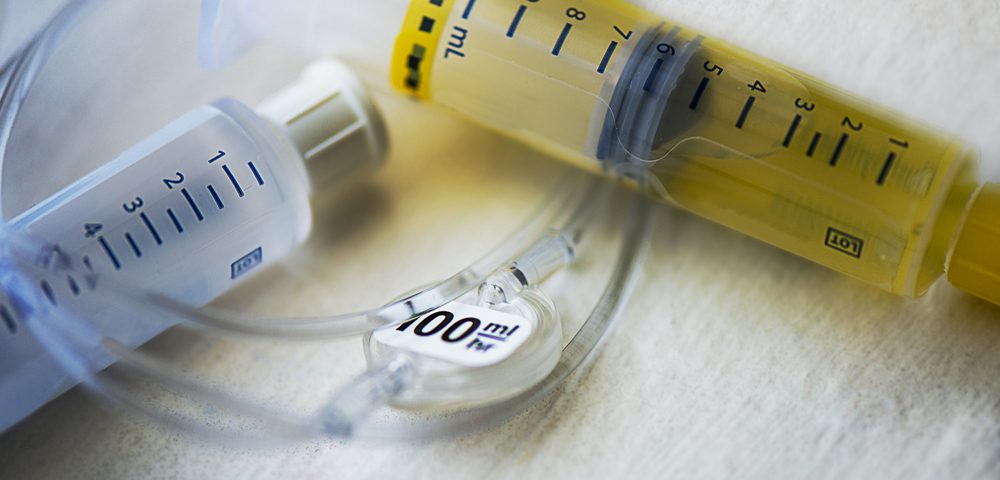How My Port Empowered Me

Medical science is ever evolving. There are more diseases being discovered, advances in medical technology, and changes in perceptions of medications and their effects on the human body. Humanity has definitely come a long way since believing that drilling a hole in a patient’s skull would rid them of evil spirits.
Full-time patients sometimes get to benefit from these new medical technologies. The one that has made a significant improvement in my quality of life is a port-a-cath, also known as a chemo port or simply a port.
A port is a small medical apparatus implanted beneath the skin with a catheter that connects to a large vein. This port is used for IV infusions, without the discomfort of a needle in one’s arm or hand constantly moving around. If you bend your arm with an IV line in — to eat lunch, for example — the machine connected to your IV will sound an alarm that will drive everyone sharing a room with you insane. It also can drive you crazy, especially when you are rudely awakened from a lovely nap at 4 a.m. by a beeping machine because you bent your arm in your sleep.
I decided to get a port after being on high doses (40-60 mg) of prednisone for more than a year. Cortisone has many side effects, and one I fell victim to was thinning veins. This meant that my IV line continuously collapsed, resulting in six to eight drips for a two-day infusion. My arms looked like I was transitioning to a new race of purple and blue people.
Every six weeks when I had my Polygam S/D (immune globulin intravenous) infusions, my body would bruise, and I would be shy to show my arms. Every time I did show the bruises, I could see people staring or just feeling downright uncomfortable. I am not sure if it was because I looked like a junkie or they thought I was being physically abused.
Eventually, it got so bad that they could only find a vein in my foot. I do not wish an IV line in the foot upon my worst enemy. The discomfort it causes when trying to walk the few steps from the hospital bed to the bathroom is reason enough to refuse one.
The worst part was that the foot drip also was starting to fail. That was when the nurses started looking for feasible veins on my face, and I began to lose hope. Luckily my neurologist walked in just as they were starting to scout my face for veins and stopped them. She simply told me, “You’re getting a port.” That evening, I went to an operating theater, and surgeons placed a port under my left clavicle, connected to my superior vena cava.
The port meant my hospital stays could include activities that involved bending my arms again! I was ecstatic. This enabled me to work on my laptop as I received my infusions when I felt up to it. It also meant that I bothered the nurses a lot less with my constantly beeping machine.
I did not need eight drips per infusion. I needed one needle for every seven days. It changed my life for the better, and the lack of discomfort from an itchy IV line meant my mood was much better during hospital stays. My port made me feel like an empowered patient, so I did not mind the 4-cm scar it left on my chest.
I will always be grateful that my neurologist stood up for my quality of life and recommended a port. It was the best option for me, and the benefits completely outweighed the cons. Currently, I do not need infusions every six weeks anymore, so I have to have my port flushed with saline water and heparin every three months (other centers flush a port more frequently). A nurse can do it and it takes less than five minutes. If I had to name one inconvenience my port has caused, it would be the occasional flushes. Not a bad price to pay for the free use of your arms when stuck in the hospital.
Patients always seem to be suffering from side effects or complications. We often tend to forget that there are some problems medical science can solve for us. The important thing is to remember to bring your struggles to your physician’s attention and to have a physician who listens. We need to be active participants in our health to ensure we get the best care. Never stop fighting, life is beautiful.
***
Myasthenia Gravis News is strictly a news and information website about the disease. It does not provide medical advice, diagnosis or treatment. This content is not intended to be a substitute for professional medical advice, diagnosis, or treatment. Always seek the advice of your physician or other qualified health provider with any questions you may have regarding a medical condition. Never disregard professional medical advice or delay in seeking it because of something you have read on this website.







Lynn
I was diagnosed with MG in 1996 and publish a small newsletter for the members of our local organization. This website is terrific and offers a wealth of information. Keep up the great work!